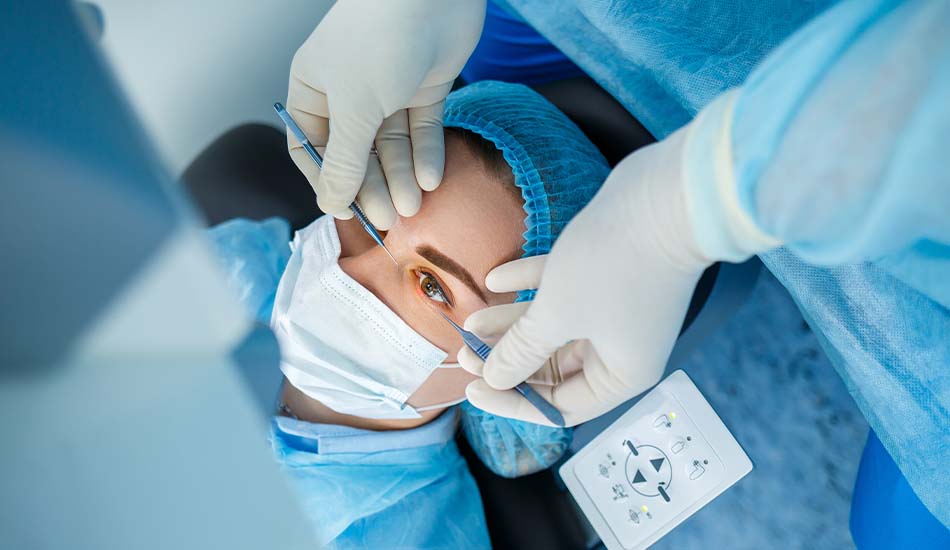
Cataract Surgery Explained: Steps, Recovery, and Success Stories
Wednesday, 22nd May 2024Cataracts are a common cause of vision impairment, especially among older adults. When cataracts significantly affect daily life, surgery becomes a viable option to restore clear vision. This article provides a detailed explanation of cataract surgery, the steps involved, the recovery process, and inspiring success stories.
What is Cataract Surgery?
Cataract surgery is a procedure that involves removing the clouded lens of the eye and replacing it with an artificial intraocular lens (IOL). This surgery is highly effective in restoring vision and is one of the most common and successful surgeries performed worldwide.
Steps Involved in Cataract Surgery
1. Pre-Surgery Consultation
Before undergoing cataract surgery, a comprehensive consultation is necessary:
- Eye Examination: The ophthalmologist will perform a thorough eye examination to assess the severity of the cataract and the overall health of your eyes.
- Medical History Review: Your medical history will be reviewed to ensure you are a suitable candidate for surgery.
- Lens Measurement: Measurements of your eye will be taken to determine the appropriate power of the intraocular lens (IOL).
2. Preparation for Surgery
- Pre-Surgery Instructions: Follow any pre-surgery instructions provided by your doctor, such as fasting and avoiding certain medications.
- Anesthesia: Local anesthesia, usually in the form of eye drops, is administered to numb the eye. Sometimes, a mild sedative may be given to help you relax.
3. The Surgical Procedure
Cataract surgery typically involves the following steps:
- Incision: A small incision is made in the cornea, the clear front part of the eye.
- Lens Removal: Using an ultrasound probe, the surgeon breaks up the cloudy lens into small pieces and gently removes them from the eye. This process is called phacoemulsification.
- Intraocular Lens (IOL) Implantation: The artificial lens is inserted through the same incision and positioned in the same place as the natural lens.
- Closure: The small incision may be self-sealing, or the surgeon may use a few tiny stitches.
4. Post-Surgery Care
- Immediate Care: After the surgery, you will be monitored for a short time before being allowed to go home. You’ll receive eye drops and instructions on how to care for your eye.
- Protective Shield: You may need to wear an eye shield to protect your eye, especially while sleeping.
Recovery Process After Cataract Surgery
First Few Days
- Rest and Relaxation: Rest your eyes and avoid strenuous activities.
- Use Eye Drops: Administer prescribed eye drops to prevent infection and reduce inflammation.
- Avoid Rubbing Your Eye: Refrain from touching or rubbing your eye to ensure proper healing.
First Few Weeks
- Follow-Up Appointments: Attend all follow-up appointments to monitor the healing process and ensure there are no complications.
- Gradual Return to Activities: Slowly resume normal activities, but avoid heavy lifting and bending over. Protect Your Eye: Wear sunglasses to shield your eyes from bright light and UV rays.
Long-Term Recovery
- Final Vision Stabilization: Vision may fluctuate initially but should stabilize within a few weeks to months.
- Continued Eye Care: Maintain regular eye check-ups to monitor eye health and ensure the long-term success of the surgery.
Success Stories: Real Patient Experiences
Emily’s Journey Back to Clear Vision
Emily, a 68-year-old retiree, shares her experience: "I had been struggling with blurry vision and glare for years. Cataract surgery was a game-changer for me. The procedure was quick, and the recovery was smoother than I expected. Now, I can see clearly and enjoy my hobbies again."
John’s Return to an Active Lifestyle
John, a 72-year-old avid golfer, recounts his story: "Cataracts were making it hard for me to see the ball on the golf course. After the surgery, my vision improved dramatically. I’m back to playing golf regularly, and it feels fantastic to have my vision restored."
Maria’s Enhanced Quality of Life
Maria, a 75-year-old grandmother, describes her experience: "Cataract surgery gave me my independence back. I can read, cook, and drive without any issues. The difference in my vision is night and day. I’m so grateful for the care I received and the amazing results."
Conclusion
Cataract surgery is a highly effective procedure that can significantly improve vision and quality of life. Understanding the steps involved, the recovery process, and learning from real patient success stories can help you make an informed decision about cataract surgery. If you’re experiencing symptoms of cataracts, consult with an eye care professional to explore your options and take the first step toward clearer vision and a brighter future.


